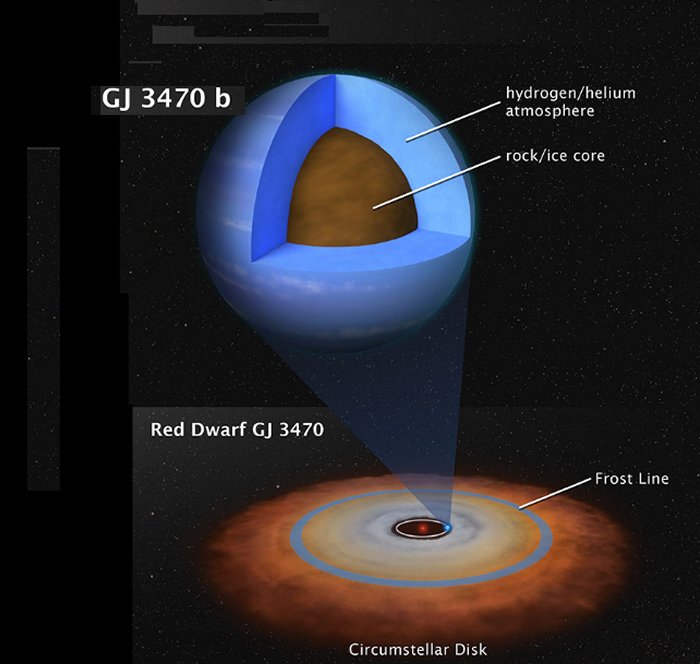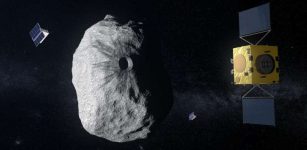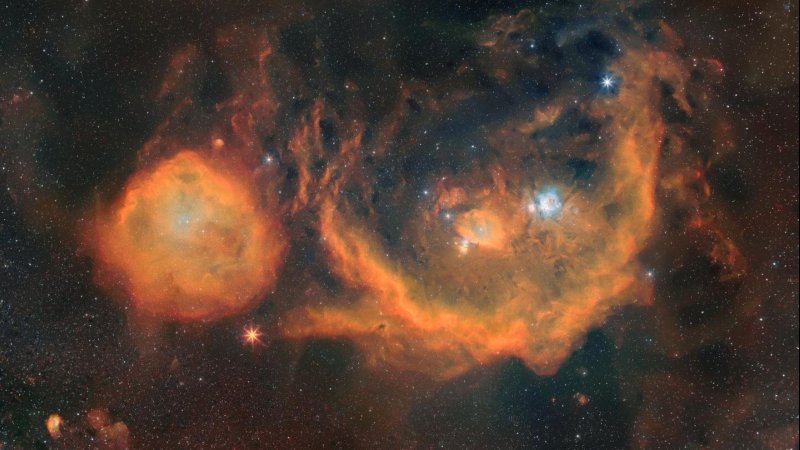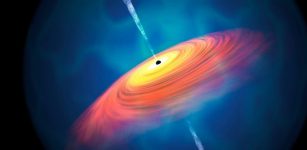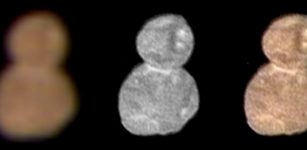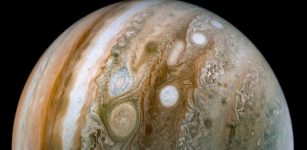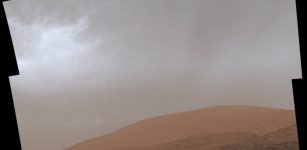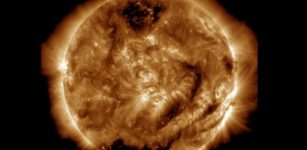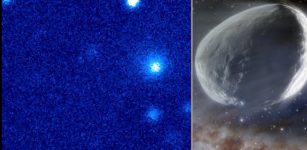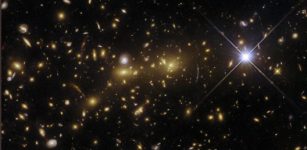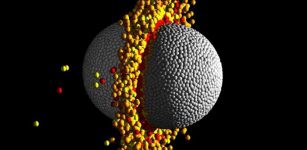Detailed Chemical “Fingerprint” Of Midsize Planet Revealed by Hubble, Spitzer
Eddie Gonzales Jr. – MessageToEagle.com – Hubble and Spitzer Telescopes identified for the first time, the detailed chemical “fingerprint” of a planet that can’t be found in our own solar system, but they are common around other stars.
The planet, Gliese 3470 b (also known as GJ 3470 b), may be a cross between Earth and Neptune, with a large rocky core buried under a deep, crushing hydrogen-and-helium atmosphere. Weighing in at 12.6 Earth masses, the planet is more massive than Earth but less massive than Neptune (which is more than 17 Earth masses).
This artist’s illustration shows the theoretical internal structure of the exoplanet GJ 3470 b. It is unlike any planet found in the Solar System. Weighing in at 12.6 Earth masses the planet is more massive than Earth but less massive than Neptune. Unlike Neptune, which is 3 billion miles from the Sun, GJ 3470 b may have formed very close to its red dwarf star as a dry, rocky object. It then gravitationally pulled in hydrogen and helium gas from a circumstellar disk to build up a thick atmosphere. The disk dissipated many billions of years ago, and the planet stopped growing. The bottom illustration shows the disk as the system may have looked long ago. Observation by NASA’s Hubble and Spitzer space telescopes have chemically analyzed the composition of GJ 3470 b’s very clear and deep atmosphere, yielding clues to the planet’s origin. Many planets of this mass exist in our galaxy.Credits: NASA, ESA, and L. Hustak (STScI)
Many similar worlds have been discovered by NASA’s Kepler space observatory, whose mission ended in 2018. In fact, 80% of the planets in our galaxy may fall into this mass range. However, astronomers have never been able to understand the chemical nature of such a planet until now, researchers say.
“This is a big discovery from the planet-formation perspective. The planet orbits very close to the star and is far less massive than Jupiter – 318 times Earth’s mass – but has managed to accrete the primordial hydrogen/helium atmosphere that is largely ‘unpolluted’ by heavier elements,” Björn Benneke of the University of Montreal in Canada, said in a press release.
Astronomers combined capabilities of NASA’s Hubble and Spitzer telescopes to study atmosphere of GJ 3470 b’s atmosphere. To probe deep into planet’s atmosphere, which is clear, with only thin haze, wasn’t difficult.
“For the first time we have a spectroscopic signature of such a world,” said Benneke. But he is at a loss for classification: Should it be called a “super-Earth” or “sub-Neptune?” Or perhaps something else?
“We expected an atmosphere strongly enriched in heavier elements like oxygen and carbon which are forming abundant water vapor and methane gas, similar to what we see on Neptune,” said Benneke. “Instead, we found an atmosphere that is so poor in heavy elements that its composition resembles the hydrogen/helium-rich composition of the Sun.”
Other exoplanets, called “hot Jupiters,” are thought to form far from their stars and over time migrate much closer. But this planet seems to have formed just where it is today.
“We’re seeing an object that was able to accrete hydrogen from the protoplanetary disk but didn’t run away to become a hot Jupiter,” said Benneke. “This is an intriguing regime.”
One explanation is that the disk dissipated before the planet could bulk up further. “The planet got stuck being a sub-Neptune,” said Benneke.
NASA’s upcoming James Webb Space Telescope will be able to probe even deeper into GJ 3470 b’s atmosphere.
Written by Eddie Gonzales Jr. – MessageToEagle.com Staff

